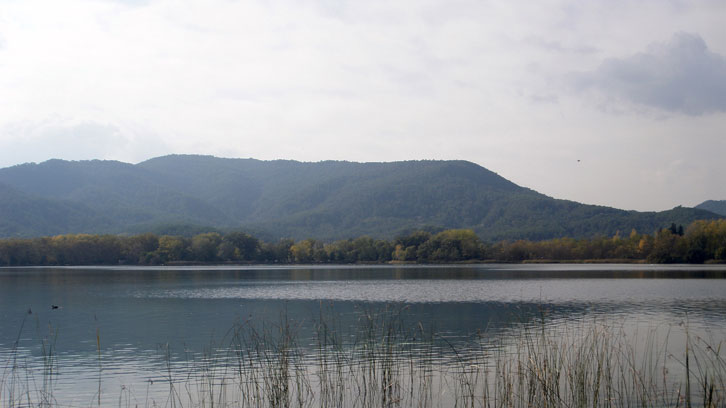Vegetation history and Neolithic land-use in the Lake Banyoles area

The Holocene, despite being a relatively stable climatic period compared to the previous glacial period, was punctuated by cooling and drying oscillations.Nevertheless, human activities must be considered in order to comprehend environmental changes occurring since Middle Holocene onwards.
This paper focuses on the high-resolution analysis of pollen, sedimentology and botanical macro-remains registered on the banks of the Lake of Banyoles (Girona, Spain). The core sequence comprises a high resolution mid-Holocene (ca. 8.9–3.35 cal ka BP) vegetation succession, and sedimentological, geochemical and geomorphological proxies are related to both climatic and anthropogenic causes. Deforestation processes affected natural vegetation development in the Early Neolithic (7.25–5.55 cal ka BP) and Late Neolithic (5.17–3.71 cal ka BP), in the context of broadleaf deciduous forest resilience against cooling and drying oscillations.
Neolithic land-use represented a turning point in the scale of human impact on the landscape. The deforestation process and the clearance maintenance between 7.25 and 5.55 cal ka BP show long intensive exploitation of the landscape in the Early Neolithic period. Afterwards, in the Late Neolithic, short deforestation processes linked with fire episodes are documented, showing higher mobility in settlement patterns and the practice of the slash and burn farming model.
Changes in sedimentation dynamics and in lake water level caused the emergence of dry land on the lake margin where a riparian forest appeared from 5.55 cal ka BP onwards. Definitely, in the context of an increasing aridification process, Neolithic land-use played an important role in vegetation history and environmental evolution.
This research was undertaken through the projects ‘Organización social de las primeras comunidades agrícola-ganaderas a partir del espacio doméstico: Elementos estructurales y áreas de producción y consumo de bienes (HAR2012-38838C02-01)/Arquitectura en madera y áreas de procesado y consumo de alimentos (HAR2012-38838-C0202)’, funded by the Ministerio de Economía y Competitividad - Subdirección General de Proyectos de Investigación (Spain) and ‘La Draga en el procés de neolitització del nord est peninsular (2014/100822)’ funded by the Catalan Government. The research has been conducted in the framework of the AGREST research group (2014 SGR 1169 521704).
References
Revelles, Jordi; Cho, Sònia; Iriarte, Eneko; Burjachs, Francesc; van Geel, Bas; Palomo, Antoni; Piqué, Raquel; Peña-Chocarro, Leonor; Terradas, Xavier. Mid-Holocene vegetation history and Neolithic land-use in the Lake Banyoles area (Girona, Spain). Palaeogeography, Palaeoclimatology, Palaeoecology. 2015, vol. 435, p. 70-85. doi: 10.1016/j.palaeo.2015.06.002.


